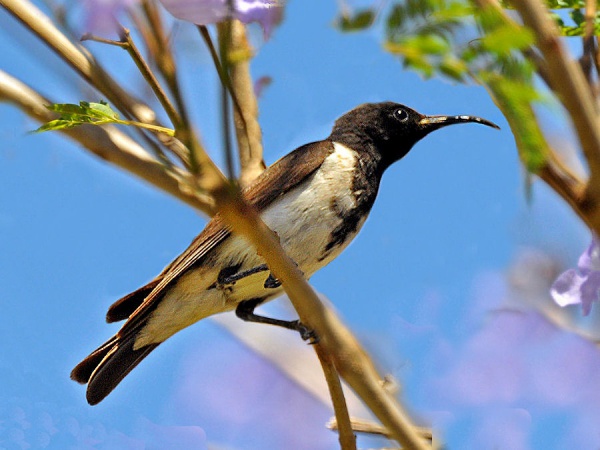Facts About Black honeyeater
The black honeyeater (Sugomel niger) is an endemic Australian bird that stands out due to its unique characteristics. It is the sole species in its genus, Sugomel. Exhibiting clear sexual dimorphism, males are adorned in striking black and white plumage, while females present a speckled grey-brown appearance. Black honeyeaters primarily feed on nectar, facilitated by their long, curved bills, but their diet also includes insects and occasionally ash from campfires. They build cup-shaped nests and inhabit arid regions where emu bushes are prevalent. During the breeding season, males perform elaborate song flights, and both parents partake in rearing the young. Despite their declining numbers, they are currently listed as "Least Concern" on the IUCN Red List.
From a scientific perspective, the black honeyeater has undergone several taxonomic revisions before being classified under the genus Sugomel. It is closely related to the birds in the genus Myzomela, as per the IOC Birdlist, with its official name being Sugomel niger. As a member of the Meliphagidae family, it shares kinship with other Australian bird families like Pardalotidae and Maluridae.
The physical appearance of the black honeyeater is notably distinctive. Males are characterized by their black and white coloration, while females are marked by a brown, speckled pattern. Their breeding habits are particularly intriguing; males engage in song flights as a courtship display, and females are primarily responsible for nest building. Their diet is composed mostly of nectar and insects, though some individuals have been observed consuming ash, possibly for its calcium content.
Habitually, black honeyeaters are found in the dry and semi-arid parts of Australia, particularly in regions where emu bushes thrive. Their migratory patterns are influenced by the availability of food resources. They breed from July to December, often forming loose aggregations during this period. Although their population is declining due to habitat loss, they remain classified as "Least Concern." However, there is concern that their specialized habitat requirements could mean an underestimation of their extinction risk.
